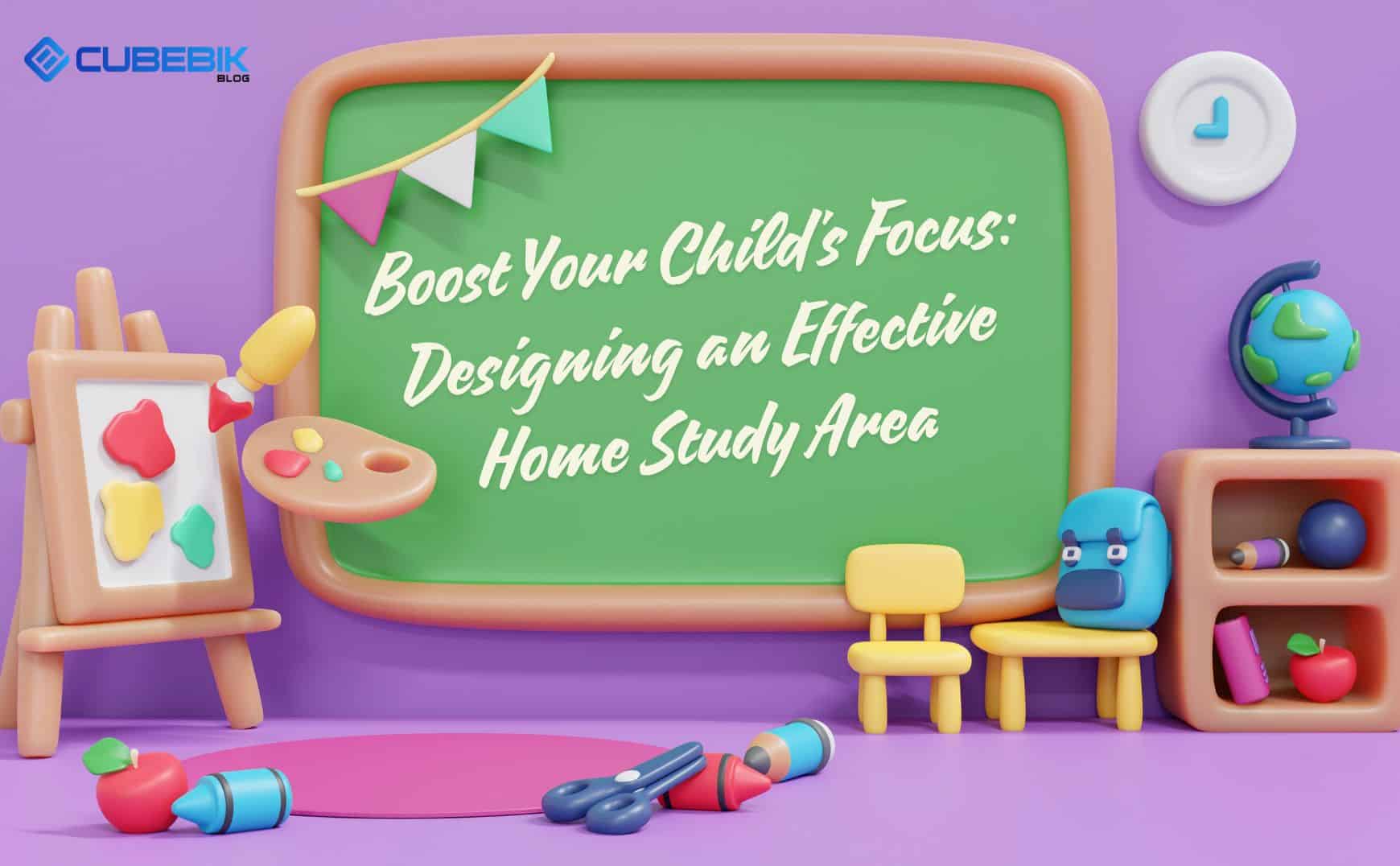Introduction
Creating an effective home study area for your child is a game-changer in boosting focus and academic performance. In today’s world of constant distractions, a dedicated space for learning becomes a sanctuary where concentration thrives. This carefully designed environment signals to your child’s brain that it’s time to study, helping to establish routines and positive habits. More than just a desk and chair, an ideal study area minimizes distractions, enhances comfort, and promotes productivity.
Key elements of an effective study space include proper lighting, ergonomic furniture, and smart organization. These components work together to create an atmosphere conducive to learning and retention. Whether you’re working with a small corner or an entire room, the principles remain the same: reduce clutter, maximize comfort, and personalize the space to your child’s needs. By investing time and thought into creating this special area, you’re setting the stage for improved focus, better study habits, and ultimately, academic success.
Choosing the Right Location
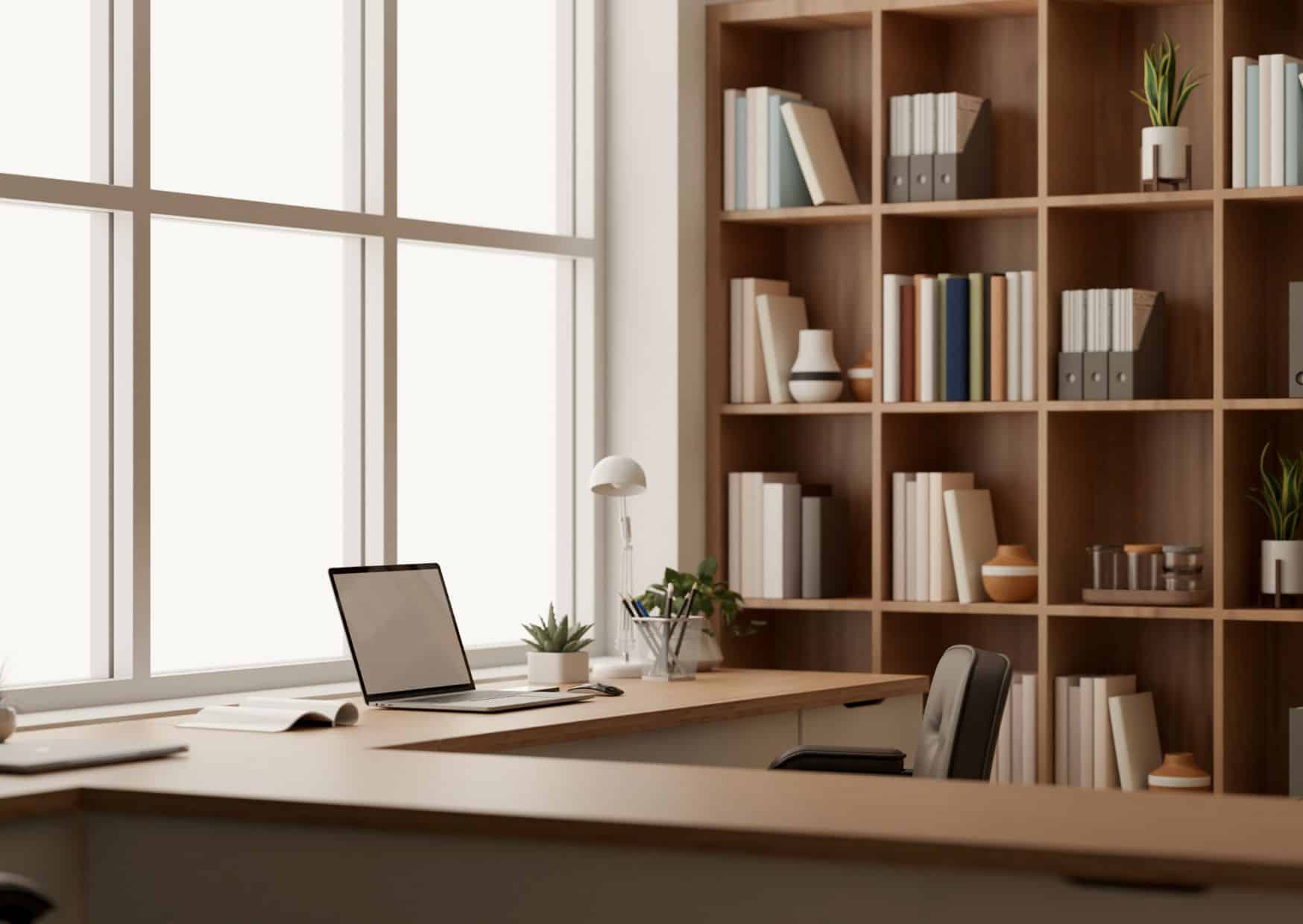
Considerations for selecting the study area
When choosing the ideal location for your child’s study area, several factors come into play. First, consider the noise level of potential spaces. A quiet environment is crucial for concentration, so avoid high-traffic areas or rooms near noisy appliances. Natural light is another important factor, as it can enhance mood and reduce eye strain. Look for a spot near a window, if possible. Also, consider the room’s temperature and ventilation to ensure comfort during long study sessions.
Balancing quiet and accessibility
Finding the right balance between a quiet study space and one that’s easily accessible is key. While you want to minimize distractions, the area shouldn’t be so isolated that it’s difficult to supervise or feels disconnected from the rest of the home. A location that allows for occasional parental check-ins without being disruptive can be ideal. This might mean choosing a corner of a living room or a nook in a hallway, rather than a completely separate room.
Adapting to different home layouts
Every home is unique, and finding the perfect study spot may require some creativity. In smaller homes or apartments, consider multi-purpose solutions like a fold-down desk in the kitchen or a converted closet space. For open floor plans, use room dividers or strategically placed bookshelves to create a defined study area. In shared bedrooms, a loft bed with a desk underneath can maximize space. The key is to be flexible and think outside the box, adapting the concept of a study area to fit your specific home layout and family needs.
Essential Furniture and Equipment
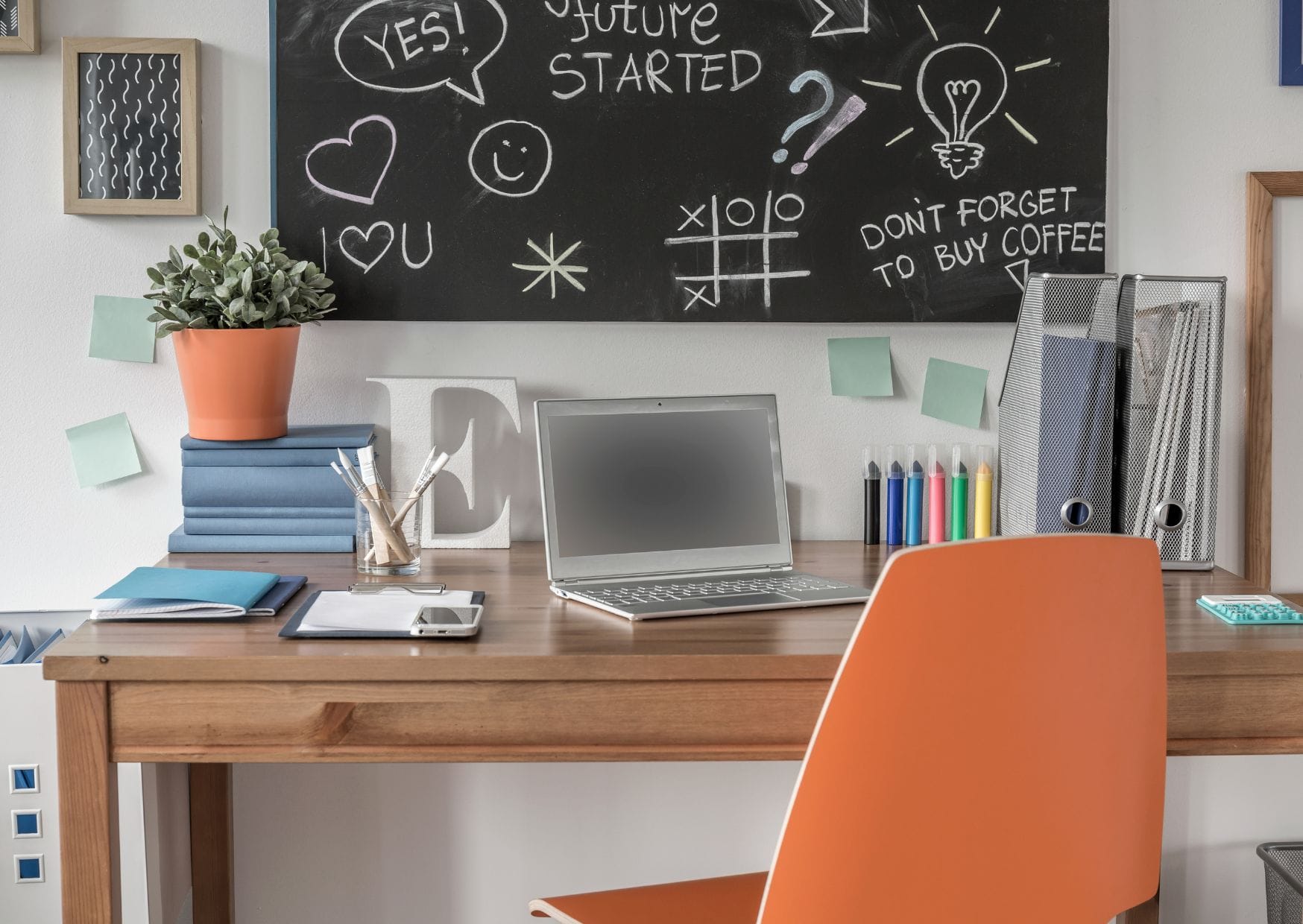
Ergonomic desk and chair
The foundation of any effective home study area is an ergonomic desk and chair. A properly designed desk should provide adequate workspace for books, computers, and writing materials. Look for desks with adjustable heights to accommodate your child’s growth. The ideal chair should have good back support, be height-adjustable, and allow your child’s feet to rest flat on the floor. Consider chairs with wheels for easy movement and armrests for additional support. Ergonomic furniture helps maintain proper posture, reducing fatigue and potential long-term health issues.
Proper sizing for different age groups
It’s crucial to choose furniture that’s appropriate for your child’s age and size.
- For younger children (ages 5-10), desks should be around 24-28 inches high, while chairs should have a seat height of 12-15 inches.
- For pre-teens and teenagers (ages 11-18), desk heights of 28-30 inches and chair seat heights of 16-18 inches are typically suitable.
Remember that these are general guidelines; always prioritize your child’s comfort and ensure they can sit with their elbows at a 90-degree angle when using the desk.
Storage solutions (shelves, drawers, organizers)
Efficient storage is key to maintaining an organized and clutter-free study space. Incorporate a variety of storage solutions to accommodate different study materials:
- Bookshelves: Install shelves above or near the desk for easy access to textbooks and reference materials.
- Drawers: Choose desks with built-in drawers or add a separate drawer unit for storing supplies and papers.
- Desktop organizers: Use pencil holders, file organizers, and small trays to keep frequently used items within reach.
- Wall-mounted organizers: Utilize vertical space with wall pockets or magnetic boards for notes and schedules.
- Rolling carts: These can provide flexible storage that can be moved as needed.
By combining these storage options, you can create a customized organization system that suits your child’s specific needs and study habits. A well-organized space not only looks neater but also helps improve focus and efficiency by reducing time spent searching for materials.
Optimizing Lighting

Importance of good lighting for focus
Proper lighting is a crucial element in creating effective home study area ideas. Good lighting not only reduces eye strain but also plays a significant role in improving focus for studying at home. Well-lit spaces help maintain alertness, enhance mood, and increase productivity. Poor lighting, on the other hand, can lead to headaches, fatigue, and decreased concentration. When designing your child’s study area, prioritize lighting to create an environment conducive to learning and sustained focus.
Natural light vs. artificial light
Natural light is ideal for a home study area. It provides a full spectrum of color, reduces eye fatigue, and has been shown to improve mood and cognitive performance. When possible, position the study desk near a window to maximize natural light exposure. However, be mindful of glare on screens or paper, which can be mitigated with adjustable blinds or curtains.
For times when natural light is insufficient, or for evening study sessions, high-quality artificial lighting becomes essential. LED bulbs that mimic natural daylight are an excellent choice for home study areas. They provide consistent, flicker-free illumination that helps improve focus for studying at home. Consider using adjustable lighting systems that allow for brightness control throughout the day.
Task lighting options and placement
To optimize your home study area ideas, incorporate task lighting alongside ambient room lighting. Task lighting provides focused illumination for specific activities like reading or writing. Here are some task lighting options to consider:
- Desk lamps: Choose adjustable lamps that can be directed onto work surfaces without causing glare.
- Under-shelf lighting: Install LED strips under shelves to illuminate the desk area evenly.
- Clip-on lights: These versatile lights can be attached to books or the desk edge for targeted lighting.
- Floor lamps: Placed behind the chair, they can provide overhead lighting without taking up desk space.
When placing task lighting, aim to reduce shadows and eliminate glare on screens or paper. The light source should be positioned to the side opposite your child’s writing hand to prevent casting shadows while working.
By thoughtfully implementing these lighting strategies, you can significantly enhance your child’s home study area and improve their focus for studying at home. Remember, the goal is to create a well-lit, comfortable space that promotes concentration and supports long-term eye health.
Managing Distractions

Identifying common distractions
To effectively minimize distractions in study space, it’s crucial to first identify the most common culprits. In a home study space, these often include:
- Electronic devices (smartphones, tablets, TVs)
- Noise from family members or outside
- Visual clutter in the study area
- Social media notifications
- Pets
- Irregular schedules or lack of routine
Recognizing these distractions is the first step in creating a more focused home study space. Encourage your child to be aware of what diverts their attention most frequently.
Creating visual barriers
Visual distractions can significantly impact concentration in a home study space. To minimize distractions in study space, consider these strategies:
- Use room dividers or bookshelves to section off the study area
- Position the desk facing a wall or window instead of a busy room
- Implement a fold-out desk that can be closed when not in use
- Use plain, calming colors for walls and furniture to reduce visual stimulation
- Keep the desk clear of non-essential items
These visual barriers help create a defined study zone, signaling to the brain that it’s time to focus.
Noise reduction strategies
Noise can be a major distraction in a home study area. Here are some effective noise-reduction strategies:
- Use noise-cancelling headphones for focused study sessions
- Implement a white noise machine or app to mask disruptive sounds
- Install sound-absorbing materials like curtains, rugs, or acoustic panels
- Establish “quiet hours” for the household during study times
- Consider a white noise machine or fan to create consistent background noise
By addressing both visual and auditory distractions, you can significantly enhance the effectiveness of your home study space. Remember, the goal is to create an environment that naturally promotes focus and minimizes the effort required to stay on task. With these strategies in place, your child will be better equipped to concentrate on their studies and make the most of their learning time.
Organization and Decluttering
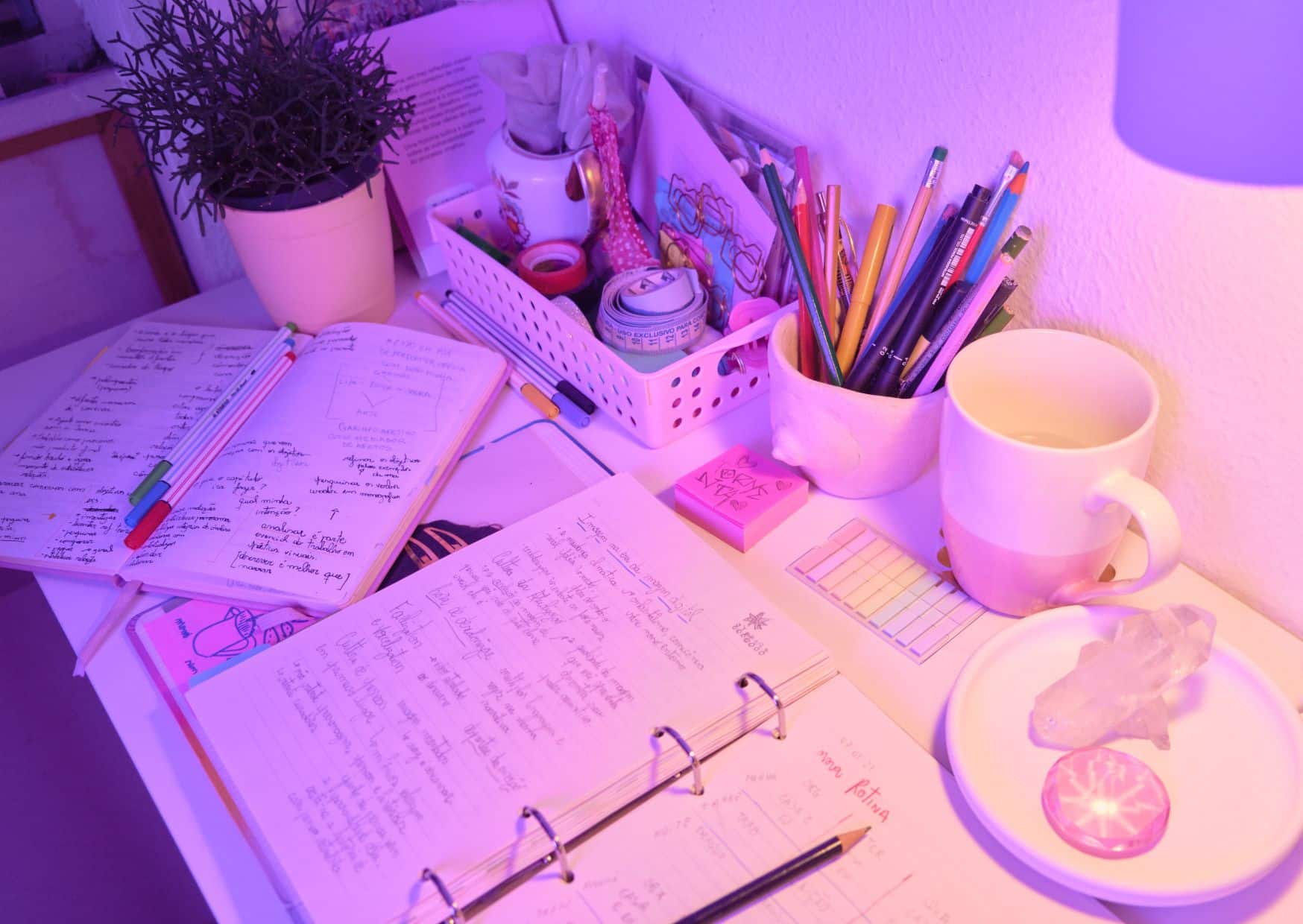
Importance of an organized space for focus
An organized study area is crucial for maintaining focus and productivity. Clutter can be a significant source of distraction, making it harder for your child to concentrate on their work. A tidy space helps reduce visual distractions and allows the mind to focus on the task at hand. Moreover, an organized environment can reduce stress and anxiety, creating a more positive attitude towards studying. To declutter study area effectively, start by assessing the current state of the space and identifying areas that need improvement.
Effective storage systems
Implementing efficient storage solutions is key to organizing school supplies at home. Consider these options:
- Desk organizers: Use drawer dividers, pencil holders, and file organizers to keep small items in order.
- Shelving units: Install shelves above or near the desk for books and larger items.
- Storage bins: Label containers for different subjects or types of supplies.
- Wall-mounted organizers: Utilize vertical space with hanging pockets or magnetic boards.
Choose storage solutions that fit your child’s specific needs and the available space. The goal is to have a place for everything, making it easy to find and put away items.
Daily decluttering habits
Establishing daily decluttering habits is essential for maintaining an organized study space. Encourage your child to:
- Clean the desk surface at the end of each study session.
- Return materials to their designated places after use.
- Sort through papers regularly, discarding what’s no longer needed.
- Keep only current projects and materials on the desk.
- Do a weekly “reset” to reorganize and clean the entire study area.
By incorporating these habits into their routine, your child will find it easier to maintain an organized space, reducing the time spent searching for materials and increasing time for productive study. Remember, a clutter-free environment not only improves focus but also fosters a sense of calm and control, which is beneficial for effective learning.
Incorporating Technology

Setting up a computer or tablet station
Integrating technology in child’s study space is essential in today’s digital learning environment. When setting up a computer or tablet station, consider the following:
- Position the screen at eye level to prevent neck strain
- Ensure proper distance between the eyes and screen (about arm’s length)
- Use an adjustable stand for tablets to allow for various viewing angles
- Provide a comfortable keyboard and mouse for extended computer use
- Consider a dual-monitor setup for older students to enhance productivity
Remember to create a dedicated space for the tech setup that doesn’t overwhelm the entire study area.
Cable management and charging solutions
A tech setup for home study area should be both functional and tidy. Effective cable management is crucial for maintaining an organized space:
- Use cable clips or ties to bundle and secure loose wires
- Invest in a surge protector or power strip with multiple outlets
- Consider a charging station for multiple devices
- Utilize cable management boxes to hide power strips and adapters
- Install grommets in the desk for a cleaner look when routing cables
These solutions help prevent tangled cords and create a neater, more efficient workspace.
Balancing tech use with traditional study methods
While technology is important, balancing it with traditional study methods can lead to a more inspiring study room design. Consider:
- Incorporating a bulletin board for handwritten notes and schedules
- Providing a comfortable reading nook with good lighting for textbooks
- Including a whiteboard for brainstorming and visual learning
- Maintaining a supply of traditional materials like notebooks and pens
- Encouraging breaks from screens with hands-on learning activities
By combining both digital and analog elements, you create a versatile study space that caters to different learning styles and preferences. This balance can help prevent digital fatigue and promote a more holistic approach to learning.
Remember, the goal is to create a space where technology enhances rather than dominates the learning experience. Regularly assess and adjust the tech setup to ensure it continues to meet your child’s evolving educational needs.
Personalizing the Space
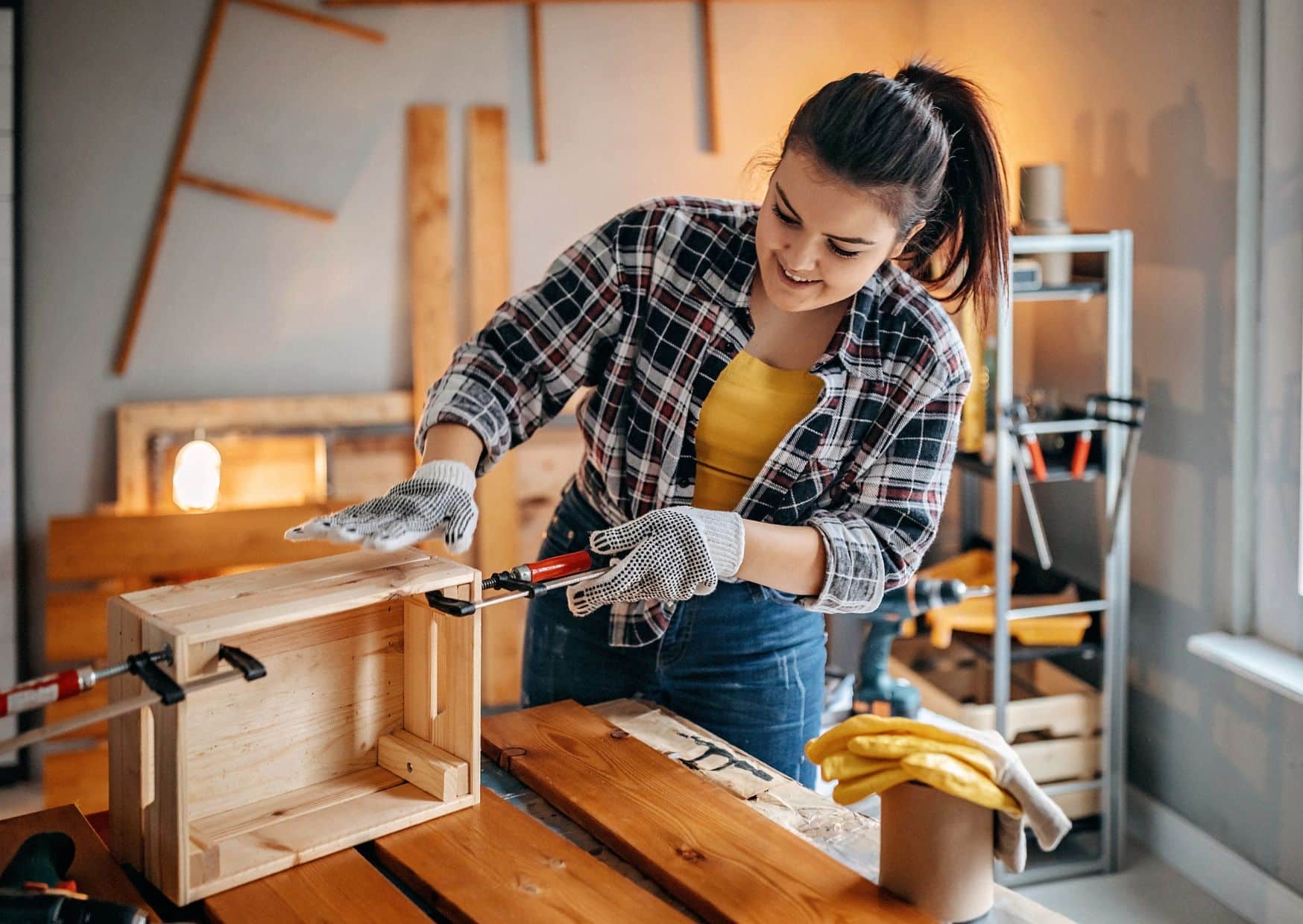
Adding motivational elements
When designing a home study area, incorporating motivational elements can significantly boost your child’s enthusiasm for learning. Consider these DIY study area ideas:
- Create an inspiration board with quotes, goals, and achievements
- Display academic awards or certificates
- Add a small plant or terrarium to bring life to the space
- Hang a world map or subject-related posters
- Include a small, meaningful object that encourages perseverance
These personal touches can transform a basic workspace into an inspiring environment that encourages productivity and positivity.
Color psychology for focus and learning
The colors used in your home study area design can have a significant impact on mood and concentration. When planning a teen study room design, consider these color choices:
- Blue: Promotes calmness and helps with concentration
- Green: Reduces eye strain and fosters a sense of balance
- Yellow: Enhances creativity and optimism (use in moderation)
- Orange: Energizes and stimulates mental activity
- Purple: Encourages imagination and problem-solving
Use these colors in paint, furniture, or accessories to create an environment conducive to learning. Remember, lighter shades are often better for maintaining a bright, open feel in the study space.
Personalizing without creating distractions
While personalization is important, it’s crucial to strike a balance to avoid creating a distracting environment. Here are some tips for personalizing a home study area design without compromising focus:
- Limit personal items to a designated area, such as a small shelf or pinboard
- Choose decorative items that are meaningful but not overly attention-grabbing
- Opt for subtle patterns and textures rather than bold, busy designs
- Use removable decals or washi tape for easy updates as interests change
- Incorporate personal elements into functional items, like custom book covers or a unique desk lamp
The key is to create a space that reflects your child’s personality while maintaining an atmosphere conducive to concentration and learning.
When implementing these DIY study area ideas, involve your child in the process. This not only ensures the space meets their needs and preferences but also gives them a sense of ownership over their learning environment. Remember, the goal is to create a personalized yet functional space that motivates and inspires your child to engage in their studies.
Comfort and Ergonomics
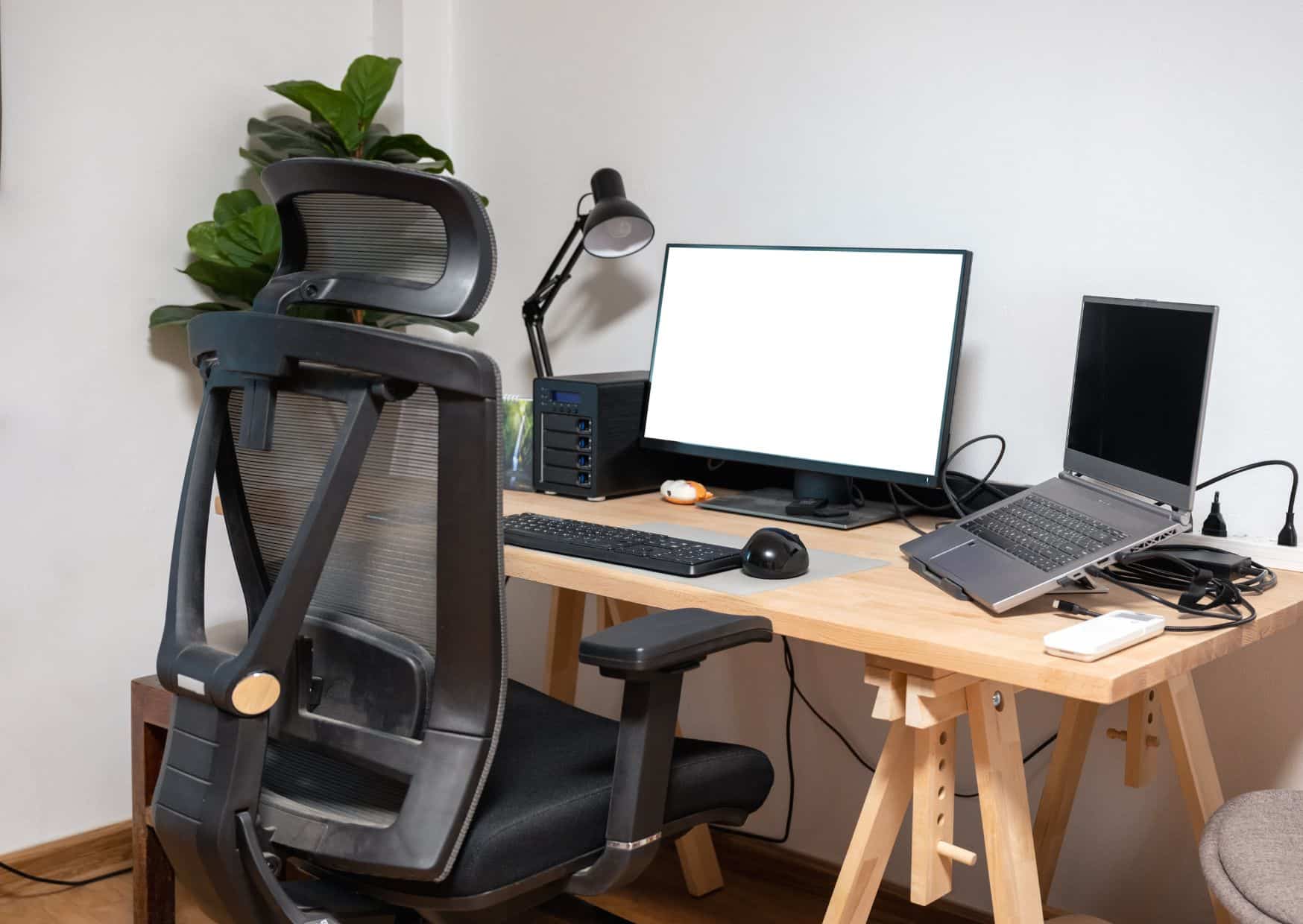
Proper posture and its importance
When designing a productive study area for children, prioritizing proper posture is crucial. Correct posture not only prevents physical discomfort and potential long-term health issues but also enhances focus and productivity. Ensure that:
- The chair height allows feet to rest flat on the floor
- The desk is at elbow height when seated
- The computer screen is at eye level to prevent neck strain
- There’s adequate legroom under the desk
Educate your child about the importance of maintaining good posture and encourage regular posture checks during study sessions.
Comfortable seating options
Comfortable seating is essential for extended study periods. Consider these options:
- Ergonomic desk chairs with adjustable height and lumbar support
- Balance ball chairs for active sitting (in moderation)
- Floor cushions or bean bags for reading breaks
- Standing desk converters for periodic standing work
Whichever option you choose, ensure it provides adequate support and encourages proper alignment. Remember, comfort shouldn’t come at the expense of good posture.
Temperature and air quality considerations
The physical environment plays a significant role in maintaining focus and comfort. Consider these factors:
- Maintain a consistent room temperature (around 70-72°F or 21-22°C)
- Ensure good ventilation to keep the air fresh
- Use a small fan for air circulation if needed
- Consider an air purifier to reduce allergens and improve air quality
- Place a small humidifier in dry climates to prevent discomfort
These elements contribute to overall comfort and can be part of your motivational decor for study area. For instance, a stylish fan or a decorative humidifier can serve both functional and aesthetic purposes.
When designing a productive study area for children, remember that comfort and ergonomics are not just about physical well-being. They also significantly impact mental focus and stamina. A comfortable, ergonomically sound study space can reduce distractions caused by physical discomfort, allowing your child to concentrate better on their studies.
Incorporate these comfort and ergonomic considerations alongside motivational decor for study area to create a space that not only inspires but also supports your child’s physical health during long study sessions. The goal is to create an environment where your child can focus on learning without being hindered by physical discomfort or environmental distractions.
Time Management Tools

Incorporating clocks and timers
To improve focus on studying at home, incorporating visible time management tools is essential. Place a wall clock in a prominent position within the study area to help your child stay aware of time passing. Additionally, consider:
- Digital timers for implementing study techniques like the Pomodoro method
- Sand timers for younger children to visualize time passing
- Smart speakers with timer functions for hands-free time management
These tools help create structure and promote better time awareness during study sessions.
Visual schedules and planners
When considering how to create a study space at home for kids, include visual aids for scheduling and planning. These can significantly enhance time management skills:
- Wall-mounted weekly or monthly calendars
- Dry-erase boards for daily to-do lists
- Color-coded subject planners
- Task completion charts with stickers or checkboxes
Visual schedules not only help children stay organized but also provide a sense of accomplishment as they track their progress.
Tools for different age groups
Time management tools should be age-appropriate to be effective:
For younger children (ages 5-10):
- Picture-based daily routine charts
- Simple, colorful timers
- Reward systems for completing tasks on time
For pre-teens (ages 11-13):
- Basic paper or digital planners
- Task prioritization lists
- Time blocking techniques with visual aids
For teenagers (ages 14-18):
- Digital calendar apps with reminders
- Project management tools for long-term assignments
- Time tracking apps to analyze study habits
By incorporating age-appropriate time management tools, you can help your child develop crucial organizational skills that will improve focus on studying at home. These tools not only aid in structuring study time but also teach valuable life skills for managing responsibilities.
Budget-Friendly Tips and DIY Ideas
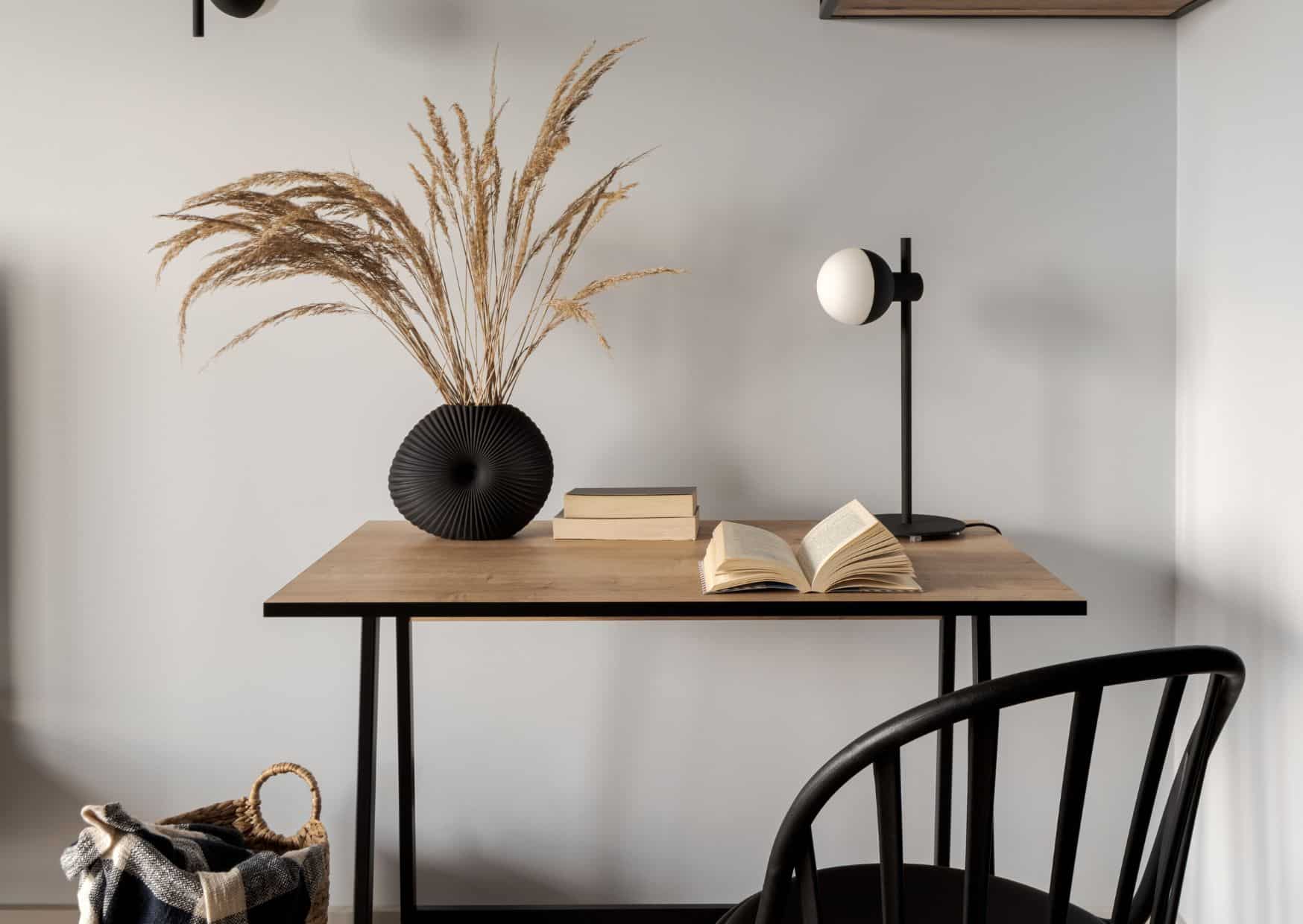
Cost-effective furniture and decor options
Creating an affordable study space setup doesn’t mean compromising on quality or style. Consider these budget-friendly options:
- Look for secondhand furniture at thrift stores or online marketplaces
- Check for sales at office supply stores or discount retailers
- Use multifunctional furniture, like a desk with built-in storage
- Opt for modular shelving units that can grow with your child’s needs
- Choose simple, classic designs that won’t quickly go out of style
Remember, functionality should be your primary concern when selecting furniture for a home study area design.
DIY projects for personalization
Incorporating DIY study area ideas can add a personal touch while keeping costs down. Try these projects:
- Create a custom desk organizer using mason jars or recycled containers
- Make a bulletin board from cork tiles or a repurposed picture frame
- Design a unique desk pad using contact paper and cardboard
- Craft colorful bookends from painted bricks or heavy objects
- Build a simple floating desk using a solid wood plank and wall brackets
These DIY projects not only save money but also allow your child to express their creativity and take ownership of their study space.
Upcycling and repurposing ideas
Upcycling is an excellent way to create an affordable study space setup while being environmentally conscious. Consider these ideas:
- Convert an old dresser into a desk by removing the top drawers
- Use paint cans as pen holders or small storage containers
- Transform wooden crates into wall-mounted shelving
- Repurpose a ladder as a unique bookshelf
- Turn an old door into a spacious desktop
When implementing these home study area design ideas, involve your child in the process. This can be a fun bonding activity and ensures the space reflects their personality and preferences.
Remember, an effective study area doesn’t have to be expensive. With creativity and some DIY effort, you can create a functional, personalized, and inspiring space that encourages learning without breaking the bank. The key is to focus on essential elements that improve productivity and comfort while adding personal touches that motivate your child to study.
Conclusion
Creating an effective home study area is crucial for supporting your child’s academic success. By focusing on key elements such as proper lighting, and ergonomic furniture, and minimize distractions, you can create an environment that enhances focus and productivity. Incorporating storage solutions, appropriate technology, and time management tools further contributes to an efficient study space. Remember to personalize the area with motivational elements that inspire your child, while maintaining a balance that doesn’t lead to distraction.
Whether you have ample space or are working with compact study area ideas, the principles remain the same: prioritize functionality, comfort, and personalization. Involve your child in the design process to ensure the space meets their specific needs and preferences. A well-designed study area not only supports current academic performance but also helps develop lifelong skills in organization, time management, and self-discipline. By investing in a thoughtful study environment, you’re setting the stage for your child’s long-term success and fostering a positive relationship with learning.

